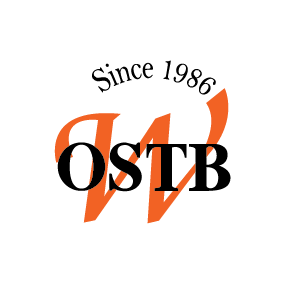You know that friend you have that speaks three languages fluently—effortlessly even? They probably also get eight hours of sleep every night, never The Complete List of Language Difficulty Rankings misplace their keys, and hit the gym without fail every morning at 5 a.m., but that’s beside the point.
It’s okay to not be that person. For most people, language learning is deeply fulfilling, fun, and a bit challenging. It takes time, discipline, and a well of motivation that you’ll need to refill. That’s why knowing the difficulty level of a language in relation to your native tongue can be useful.
Language difficulty rankings exist so you can set the fluency goalposts at a realistic distance. In this post, we’ll take a look at the easiest and hardest languages to learn, the factors that determine language difficulty, and a complete ranking of the world’s most widely spoken languages—including how long it takes to learn each language.
How do we determine language difficulty?
Determining language difficulty requires a bird’s eye view of how languages relate to each other. The Foreign Service Institute is a reliable industry expert here. With over 70 years of experience teaching languages to US government employees, they’ve compiled a comprehensive and widely accepted list of language rankings.
Their criteria is largely tied to the average length of time it takes a student to learn a language, which we’ll dive into in the next section. For now, let’s take a look at the individual components of each language that affect difficulty levels:
Linguistic Distance
In French, “the flower” translates to “la fleur”. In Spanish, it’s “la flor”, and in Italian, it’s “il fiore.” Is Coincidence? Hardly.
When we talk about linguistic distance, we’re referring to the fundamental differences between languages and how or where they’ve evolved from. Spanish, French, and Italian are all descendants of Latin and have many similarities. To see languages that are closely related, we recommend diving into the world of language families, or groups of languages that all share the same mother language.
In contrast to the similarities between the Romance languages listed above, German and Mandarin—two languages of different families with entirely unique writing systems—couldn’t be more linguistically distant.
The takeaway here is that the farther your native language is from the language you’re learning, the more challenging you may find your new language.
Grammar
Schlittschuhlaufen. That’s German for “ice skating.” German is often preceded by its hard-to-master accent and enthusiastically long vocabulary. It’s also ranked as one of the easier languages to master, as you’ll see in the list below. What’s the logic there?
German and English belong to the same Germanic language family, so their linguistic closeness wins out. And while mastering a German accent can be tricky, most speakers will understand what you’re saying through the missteps.
When it comes to pronunciation, the real difficulty factor comes into play for tonal languages. These languages, which include Vietnamese and Mandarin, require correct pronunciation and inflection to create meaning for each word. Mandarin’s four distinct tones give the same word “ma” four very different meanings.
Writing system
As an English speaker, you’ll encounter three types of writing systems:
- Languages that use the same Latin alphabet you’ll find in English
- Languages that have their own unique alphabets
- Languages based on unique writing systems
Languages that fall in the first category are often the easiest languages to learn. Because you’re already familiar with the alphabet, you have an understanding of characters and most letter sounds. Strengthening your reading and writing skills in that language, then, takes far less time.
The languages you’ll find in the second category are moderately challenging. You’ll need to learn an entirely new alphabet and memorize their corresponding letter sounds.
Still, there are languages that lack traditional alphabets. Mandarin, for example, has a logosyllabic writing system in which characters match distinct syllables in each word. These are the most difficult to learn, as new learners will find that learning through listening is much more accessible than learning through text (though Pinyin is changing the way learners approach the language).
The world’s most widely spoken languages ranked
With over 7,000 languages spoken across the globe, it’s difficult to rank them all. This list captures languages spoken by the majority of the world’s population.
The Foreign Service Institute includes time estimates alongside their difficulty rankings, but it’s important to note that everyone’s language goals are different. The time estimates here reflect how long it would take the average person to reach a Level 3 proficiency level, which is pretty fluent by most standards.
If your goals align more with a Level 1 or 2 proficiency, you may be able to learn a language even faster.








